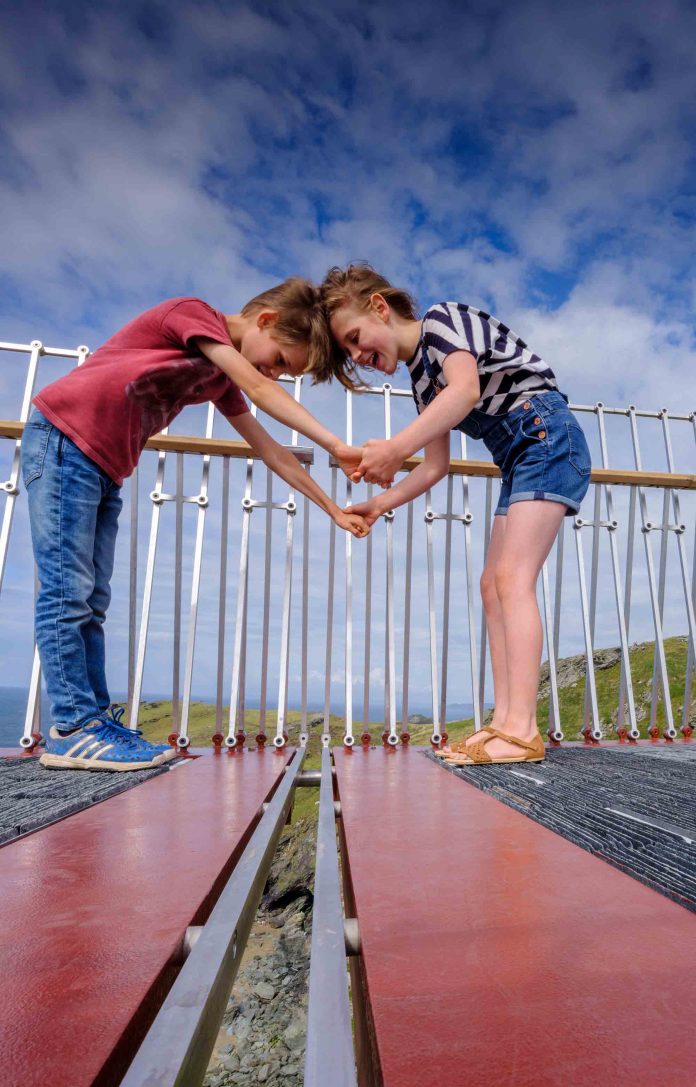
A dramatic new footbridge on the Cornish coast has reunited the two sides of historic Tintagel Castle – the legendary birthplace of King Arthur – for the first time in some 500 years. Ever since the land bridge that connected the 13th-century gatehouse on the mainland to the central fortifications on a rocky headland collapsed into the sea, the two have been separated by a 58m gorge.

The new link, part of a larger five million pound English Heritage project on the surrounding plateau, will enable visitors to approach the castle along the same route as the original land bridge, taking them straight to the site of the feasting hall of Richard, the Earl of Cornwall.

No longer will they have to navigate a twisting narrow path down some 148 steps into the gorge and up again, one that often became overcrowded during the summer months.

The sleek new crossing is made up of two six-section cantilevers, which hang independently towards each other from either side of the rocky chasm. Incredibly, the two sides don’t actually meet, with a visible 4cm space between them (mind the gap). To emphasise the link’s modernity, electro-polished stainless steel has been used on the balustrades and diagonal support bars – from a distance, these elements almost disappear from view.

Unlike the many see-through glass walkways that have proliferated elsewhere in the world, the path across this bridge has been designed to mimic the one atop the original land bridge (it also helps to minimise vertigo). Some 40,000 locally-sourced slate tiles have been seemingly knitted together on end with subtle lines of quartz to recreate geological strata in the area.
Ney & Partners Civil Engineers and William Matthews Associates created the concept, which won a 2015 design contest held by Tintagel Castle. The castle was closed in October 2018 for the works, but re-opened to the public on Sunday 11 August.



